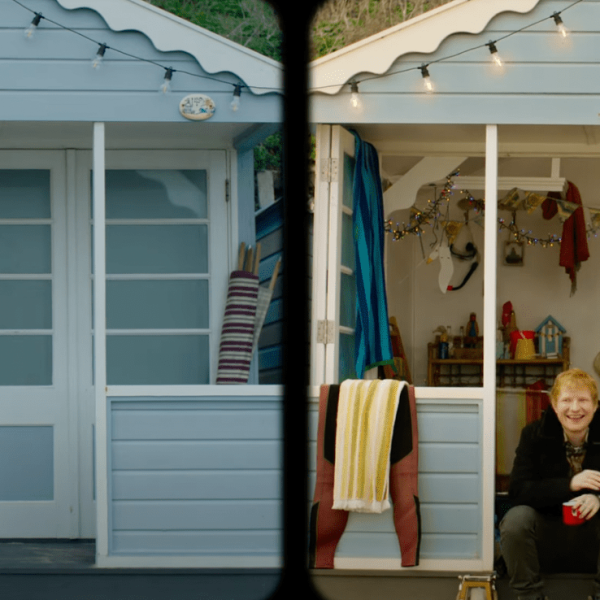
It’s strange to be truly startled and taken aback by the powerful effects of properly utilized 3D not in some Hollywood blockbuster where half of a major Midwestern American city is blown to smithereens by giant transforming robots, but during a quiet, understated, impressionistic documentary/tribute to influential German choreographer and dancer Pina Bausch (directed by Wim Wenders, no less). In fact, this might be the most amazingly you-are-there use of the technology since James Cameron landed us on Pandora. It’s just that, along with the fantastical visas and bounding, leaping, protruding dancers, you wish that the movie were more than just pretty. Sadly, it’s not. And boring is boring, even while wearing silly plastic specs.
Wenders originated the project with Bausch, who is something of a legend in the performing arts world, but died suddenly and unexpectedly in 2009 mere days after being diagnosed with cancer. That certainly must have reshaped the project’s conceptualization, which Wenders claims was influenced by the “U2 3D” concert movie, but what it’s ultimately done is left a huge hole in the center of the film where its heart should have been.

Structurally, the film is centered around large chunks of Pina’s (presumably) most influential dances – these are both performed on a stage to classical musical compositions and, in the film’s liveliest moments, in outdoor spaces, to a whole range of different music (from glittery contemporary electro-pop to swinging jazz). Interspersed with these pieces are confessional interviews with many of Pina’s peers – dancers who knew and worked with the choreographer and who comment on everything from her style of direction to the life lessons they’ve taken away following her death. Wenders photographs these moments in stark compositions, with the performers gazing into the camera, their mouths static, their words coming across via voice over narration. Occasionally, too, there’s a moment where we see Pina at work in archival footage, telling a performer how to move, a cigarette dangling precariously out of the side of her mouth.
And for a while, at least, you just go with the sheer visual opulence, gliding along as the images unfold – a caravan of dancers simulating the change in season via hand gestures while they walk along the precipice of a giant quarry; performers sloshing around in simulated rain while a giant meteorite looms overhead; a man with donkey ears pasted to the side of his face rides a subway car, suspended from above like the Batman ride at Six Flags. Wenders films these sequences beautifully, which is sort of shocking given his track record and reputation as an old school traditionalist.
But at some point you want more. The dances themselves are wondrous and beautiful, although at some point, if you don’t have an extensive understanding of impressionistic dance, they fail to make an impact. Sometimes the words of the dancers, during their interviews, are illuminating, particularly when they speak of the fascination Pina had with the elements (evidence by an early staged number where a layer of earth is spread across the stage floor and, again, that bit where people are dancing through puddles). You can get snatches, here and there, of what she is trying to convey, most of it being incredibly sophisticated conceptual stuff about what it means to be a modern woman, but they come in flashes and without an corroborating evidence (in the form of either historical or critical context), you’re mostly left guessing. 
Maybe Wenders assumes that everyone knows who Pina is, or that they’ll get so caught up in the majesty of the performances that even if they don’t, they’ll still be compelled. As the movie wears on, though, the spectacle becomes less substantial, and the thematic underpinnings harder to grasp, no matter how expressive the dancing is. What’s even more baffling is why Wenders would choose to not include anything about Pina’s contribution to film, as a performer in Fellini’s “And the Ship Sails On” and as an inspiration for Almodovar’s brilliant “Talk to Her.” These moments could have at least provided a shorthand between those audience members unfamiliar with her work previously, and the giant chunks of her pieces unfolding before us now. Instead, it’s yet another piece of biographical back story that could have been incorporated but remains out of reach.
And that’s really the chief complaint with “Pina” – that she remains aloof throughout the movie’s running time, this kind of mystical source of inspiration and creativity that we can never quite get a handle on. It’s always hard when investigating an artistic genius, but there are ways to go about it and avenues to take that Wenders doggedly refuses. For the movie to mean more than just a series of pretty dances in stunning three-dimensions, he should have allowed us to form an emotional bond with the choreographer. Not only would it have made the performances mean more (at a running time of over 90 minutes, by the end of it you can barely muster enough enthusiasm to care) but it would have made her death even more heartbreaking – this woman who created so much, her life cut so horribly short. Instead, Wenders implication that the pieces speak for themselves, coupled with his glacial sense of pacing and rhythm, make this fanciful documentary/performance film a tough slog to sit through. [C-]





